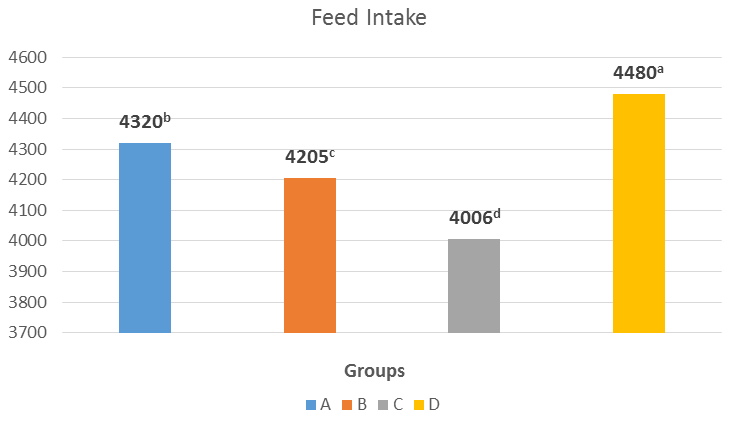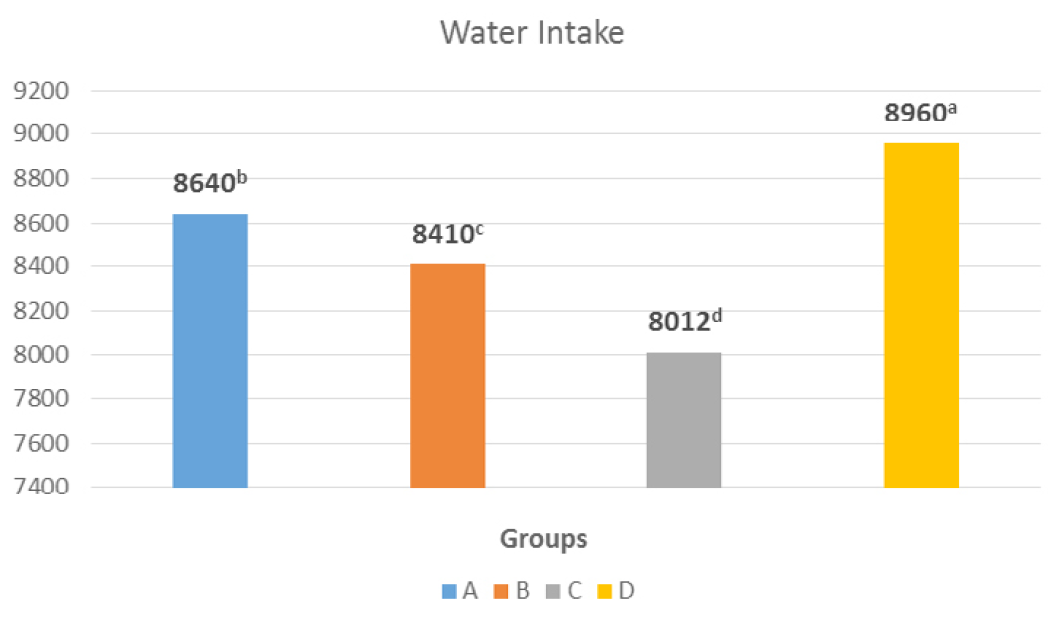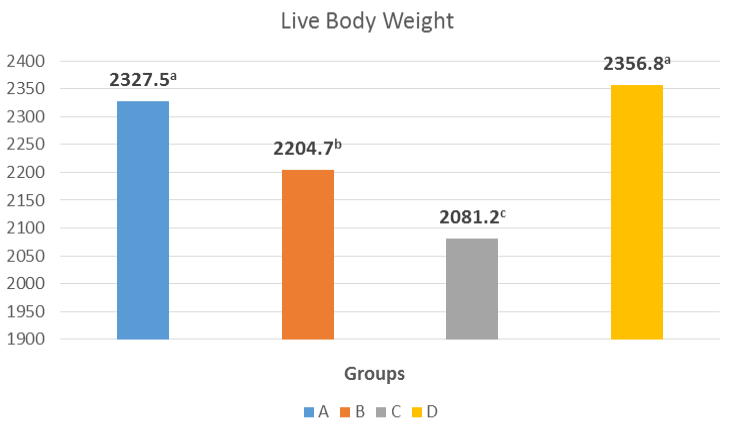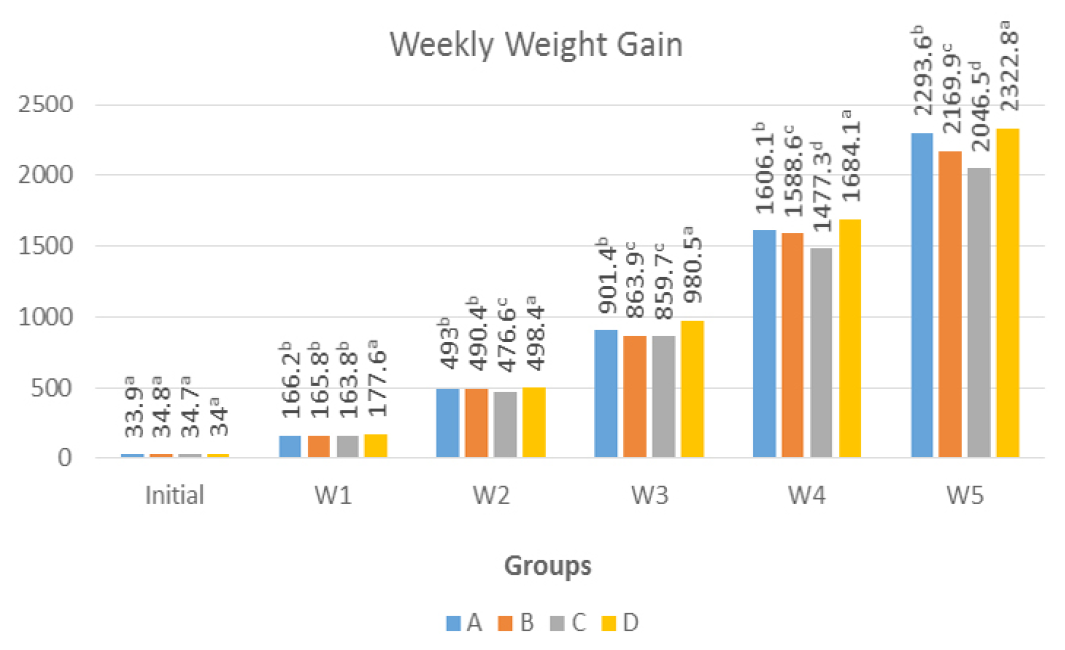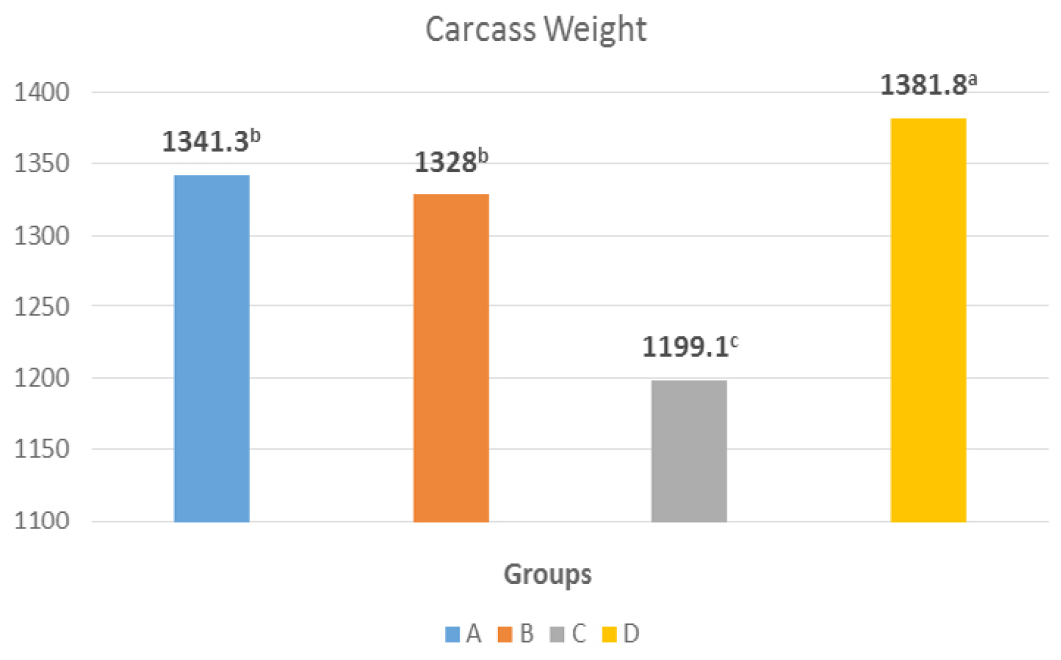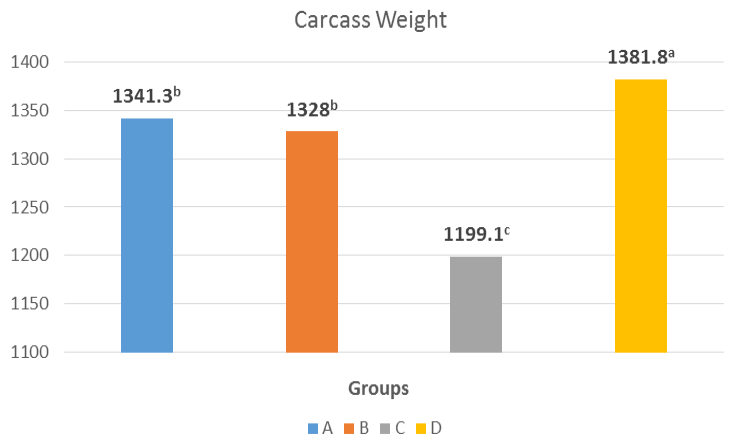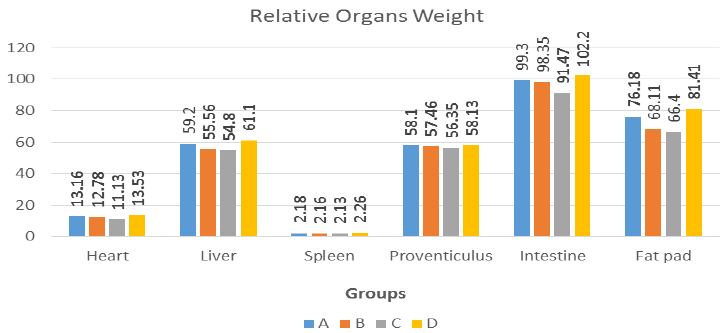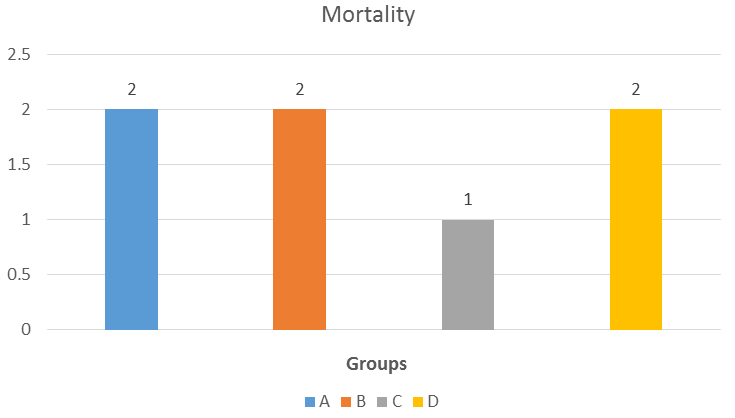Influence of Camellia sinensis on Broilers Performance
Mohsin Ali Alias Mehran Khan Solangi1, Gulfam Ali Mughal1, Asad Ali Khaskheli1*, Turab Ali Korejo3, Nazeer Ahmed Rajput2, Qurban Ali Memon3 and Maqsood Ahmed Kumbhar4
Influence of Camellia sinensis supplementation on feed intake (g/b). SE±= 12.377; LSD at 0.05= 24.470; P-value= 0.0001.
Influence of Camellia sinensis supplementation on water intake (ml/b). SE±= 24.460; LSD at 0.05= 48.358; P-value= 0.0001.
Influence of Camellia sinensis supplementation on live body weight (g/b). SE±= 31.981; LSD at 0.05= 66.712; P-value= 0.0001.
Influence of Camellia sinensis supplementation on weekly weight gain (g/b).
Influence of Camellia sinensis supplementation on carcass weight (g/b). SE±= 42.419; LSD at 0.05= 88.484; P-value= 0.0022.
Influence of Camellia sinensis supplementation on feed conversion ratio. SE±= 2.8834; LSD at 0.05= 5.2319; P-value= 0.0384.
Influence of Camellia sinensis supplementation on relative organs weight (%).
Influence of Camellia sinensis supplementation on mortality (%).









